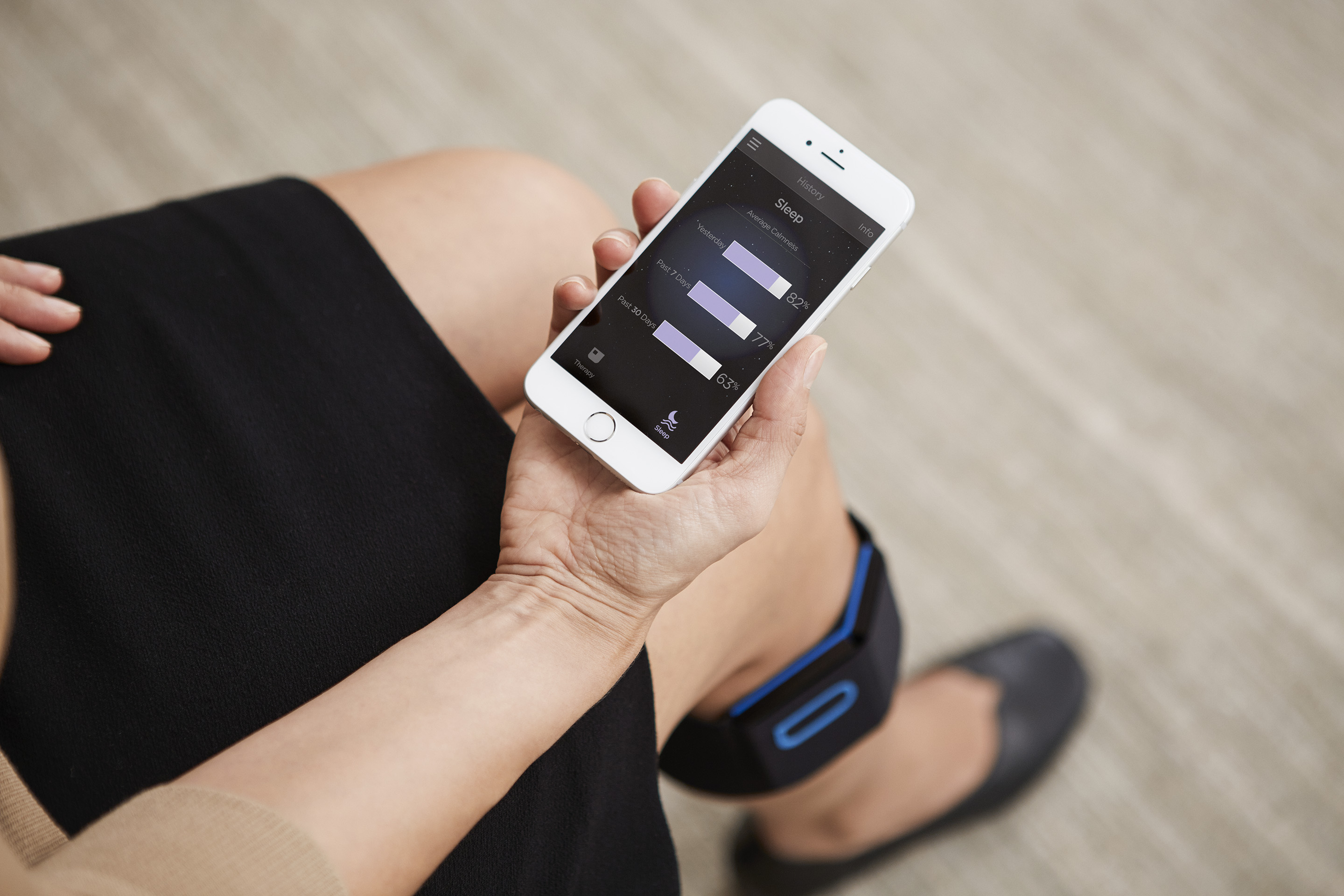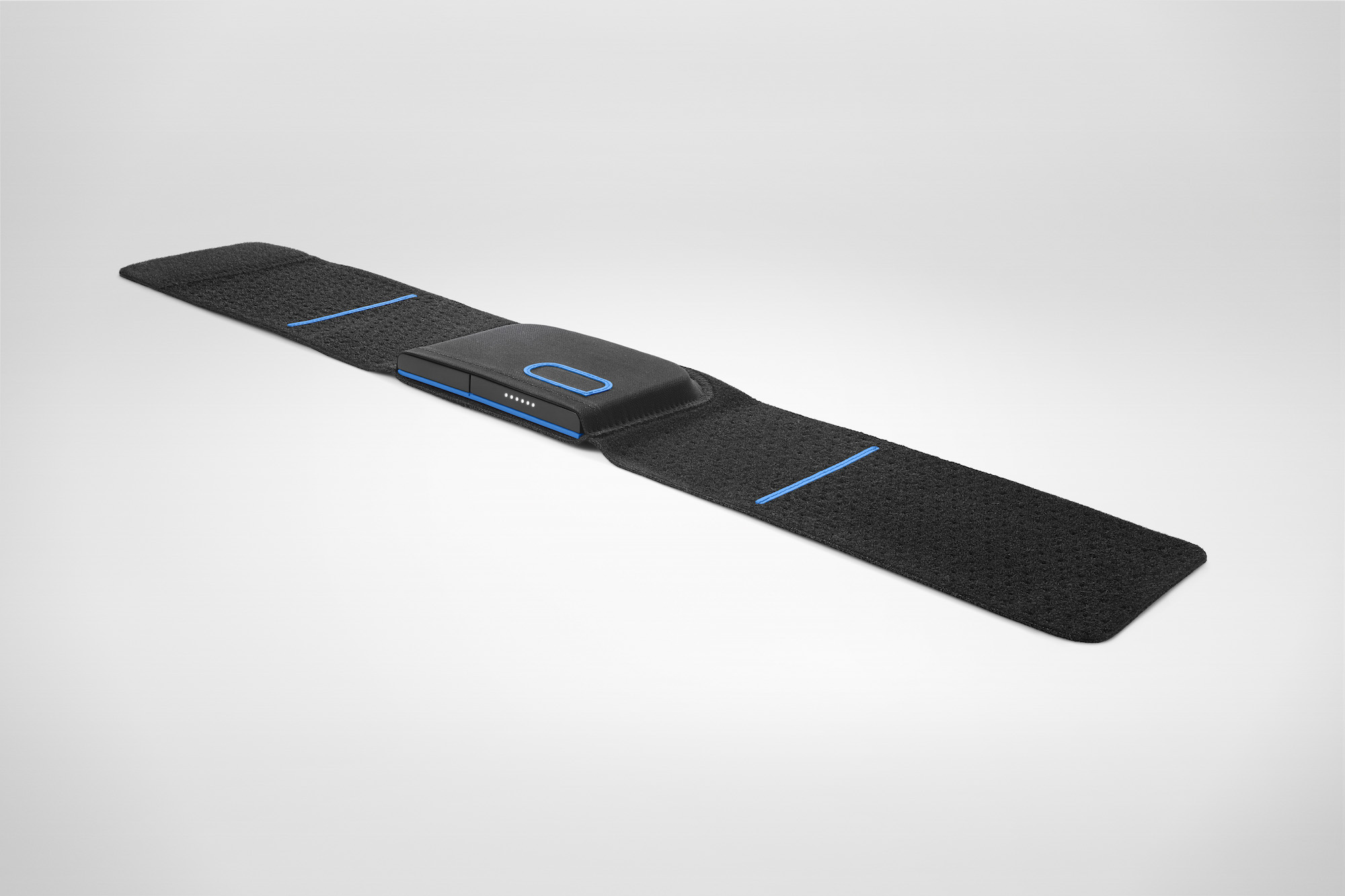
According to a Statistics Canada survey from 2008, some 1.5 million Canadians from the ages of 12 to 44 suffer from chronic pain.
When one breaks down those numbers, that means that about 9 per cent of Canadian males and 12 per cent of Canadian females report suffering from some kind of long term pain. If one were to include older parts of the population, where chronic pain is more common, those numbers would likely climb even higher.
Long term pain is, in other words, a very real issue in Canada. But it’s also an issue in the United States and other countries around the world. Given the plethora of fitness tracking wearables out the market, it’s surprising to see that so few of them have tried to differentiate themselves by offering some kind of pain relief to chronic sufferers.
That’s where Quell, a new wearable from Boston-based NeuroMetrix, comes in. The device is currently going through the crowdfunding circuit with great success. As of the writing of this piece, its Indiegogo campaign, which has 12 days to go before its conclusion, has raised $339,763, surpassing its $100,000 goal by 340 per cent.
On the surface, Quell seems like a simple device. Once a person straps it onto their upper calf and turns it on, Quell will start to emit an electrical signal that travels to brain. In response, the brain will start to secrete endogenous opioids into the spine, which causes a natural pain relief response in the body.
According to Frank McGillin, while the device itself looks simple—it’s mostly a sports band, a power unit and an electrode—it’s taken the company some time to create something that anyone can wear.
“We’re delivering high-frequency, high voltage electrical stimulation which triggers this pain response in your central nervous system,” he says. “To do that, you need to deliver the electrical pulses very precisely, and you need to be able to deliver at the right levels over time. Finally, you have to deliver it at the right dosage in order to get that pain relief response.”
The upside of all that engineering time and effort is that the device can deliver pain relief without the use of prescription drugs.
 “If you look at the pharmaceutical world, they’re plagued with issues. You have opiates that are addictive, and other pharmaceuticals that may help with the pain but have a whole different set of side effects that are as negative,” says McGillin. “We have something that is wearable, fits within a person’s lifestyle and offers an alternative way to manage pain.”
“If you look at the pharmaceutical world, they’re plagued with issues. You have opiates that are addictive, and other pharmaceuticals that may help with the pain but have a whole different set of side effects that are as negative,” says McGillin. “We have something that is wearable, fits within a person’s lifestyle and offers an alternative way to manage pain.”
As for the device’s effectiveness, McGillin admits that it probably won’t work flawlessly for everyone. “Pain is unique,” he says. “Even if you look at the best-selling prescription drugs, they don’t work for everyone.”
However, if the company’s previous efforts are any indication, then Quell should still be able to help a significant number of people.
According to McGillin, SENSUS, NeuroMetrix’s previous wearable offering, which could only obtained through a doctor’s subscription, was bought by some 8,000 people. He says that together they have logged a cumulative two-and-half million hours on the device, and for the most part their feedback has been overwhelming positive.
Collecting feedback is part of the reason NeuroMetrix brought their new device to Indigogo before properly releasing it. “We’re reaching out to the Indiegogo community to better understand your needs and wants,” says McGillin in the company’s pitch video. In terms of feedback, though, most of Quell’s backers have simply told the company that they want their device to arrive as soon as possible.
“I guess if you’re in pain you just want something quick,” muses McGillin.
What might prevent some chronic pain sufferers from purchasing this device is its price.
When Quell ships later this year, it will cost $250 USD. Additionally, once they receive their device, Quell owners will need to replace the band’s electrode component about once every two weeks. According to McGillin, this is because the electrode uses a hydrogel that naturally wears out from repeated use. The company currently plans to sell electrode resupply packs for $30 USD. Each pack comes with two electrodes. Thus, a year of sustained use will set someone back $360 USD.
Lynn Dickerson, a representative for the company, attempted to address this issue when the company’s Indigogo backers brought it. He said that since the company expects each pack to last users a month this means, then it’s fair to say that Quell delivers effective pain relief for about $1 a day.
Of course, as with any medical related device there also the safety issue. According to McGillin, there are no safety concerns with the device. “Nerve stimulation has been around for years,” he says. “So the safety is pretty well-documented. It’s also an FDA [and Health Canada] cleared device We had to go through all the regulatory hurdles in order to get approval.”
As for when Canadians can expect the device to make its way into Canada, McGillin says that NeuroMetrix hopes to start shipping to Canada in May or June. Until then, 1.5 million Canadians will be waiting to try out the device.
MobileSyrup may earn a commission from purchases made via our links, which helps fund the journalism we provide free on our website. These links do not influence our editorial content. Support us here.


